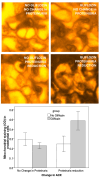SGLT2 Inhibitors: The First Endothelial-Protector for Diabetic Nephropathy
- PMID: 40004772
- PMCID: PMC11856817
- DOI: 10.3390/jcm14041241
SGLT2 Inhibitors: The First Endothelial-Protector for Diabetic Nephropathy
Abstract
Sodium-glucose co-transporter type 2 inhibitors (SGLT2i) have emerged as a class of agents relevant for managing diabetic nephropathy and cardiopathy. In a previous report, we noticed that these drugs share, with other drugs with "nephroprotective" effects, the ability to reduce the glomerular filtration rate (GFR), thus suggesting the kidney hemodynamic effect as a proxy for optimal drug dosage. We also noticed that all known nephroprotective drugs exert cardioprotective functions, suggesting the possibility of activities not mediated by the kidney. Finally, we observe that nephroprotective drugs can be grouped according to their effects on hemoglobin levels, thus suggesting their mechanism of action. While the primary mechanism of SGLT2i involves glycosuria and natriuria, growing evidence suggests broader therapeutic effects beyond hemodynamic modulation. Specifically, the evidence that SGLT2 can be expressed in several atypical regions under pathological conditions, supports the possibility that its inhibition has several extratubular effects. Evidence supports the hypothesis that SGLT2i influence mitochondrial function in various cell types affected by diabetes, particularly in the context of diabetic nephropathy. Notably, in SGLT2i-treated patients, the extent of albumin-creatinine ratio (ACR) reduction post-treatment may be correlated with mitochondrial staining intensity in glomerular endothelial cells. This implies that the anti-proteinuric effects of SGLT2i could involve direct actions on glomerular endothelial cell. Our investigation into the role of SGLT2 inhibitors (SGLT2i) in endothelial function suggests that the aberrant expression of SGLT2 in endothelial cells in T2DM would lead to intracellular accumulation of glucose; therefore, SGLT2i are the first type of endothelial protective drugs available today, with potential implications for ageing-related kidney disease. The review reveals two major novel findings: SGLT2 inhibitors are the first known class of endothelial-protective drugs, due to their ability to prevent glucose accumulation in endothelial cells where SGLT2 is aberrantly expressed in Type 2 Diabetes. Additionally, the research demonstrates that SGLT2 inhibitors share a GFR-reducing effect with other nephroprotective drugs, suggesting both a mechanism for optimal drug dosing and potential broader applications in ageing-related kidney disease through their effects on mitochondrial function and glomerular endothelial cells.
Keywords: SGLT2; ageing-related kidney disease; diabetic nephropathy; endothelial protection; kidney biopsy; mitochondrial function.
Conflict of interest statement
The authors declare no conflicts of interest.
Figures




Similar articles
-
The efficacy and safety of SGLT2 inhibitors in patients with non-diabetic chronic kidney disease: a systematic review and meta-analysis.Int Urol Nephrol. 2023 Dec;55(12):3167-3174. doi: 10.1007/s11255-023-03586-1. Epub 2023 Apr 13. Int Urol Nephrol. 2023. PMID: 37046125
-
Renal Protection with SGLT2 Inhibitors: Effects in Acute and Chronic Kidney Disease.Curr Diab Rep. 2022 Jan;22(1):39-52. doi: 10.1007/s11892-021-01442-z. Epub 2022 Feb 3. Curr Diab Rep. 2022. PMID: 35113333 Free PMC article. Review.
-
Albuminuria and Serum Tumor Necrosis Factor Receptor Levels in Patients with Type 2 Diabetes on SGLT2 Inhibitors: A Prospective Study.Diabetes Ther. 2024 Jan;15(1):127-143. doi: 10.1007/s13300-023-01488-0. Epub 2023 Oct 26. Diabetes Ther. 2024. PMID: 37883001 Free PMC article.
-
Sodium/glucose cotransporter 2 inhibitors and prevention of diabetic nephropathy: targeting the renal tubule in diabetes.Am J Kidney Dis. 2014 Jul;64(1):16-24. doi: 10.1053/j.ajkd.2014.02.010. Epub 2014 Mar 25. Am J Kidney Dis. 2014. PMID: 24673844 Review.
-
Sodium-Glucose Cotransporter-2 Inhibition and the Glomerulus: A Review.Adv Ther. 2016 Sep;33(9):1502-18. doi: 10.1007/s12325-016-0379-5. Epub 2016 Jul 16. Adv Ther. 2016. PMID: 27423646 Free PMC article. Review.
Cited by
-
Targeting ion channel networks in diabetic kidney disease: from molecular crosstalk to precision therapeutics and clinical innovation.Front Med (Lausanne). 2025 Jun 26;12:1607701. doi: 10.3389/fmed.2025.1607701. eCollection 2025. Front Med (Lausanne). 2025. PMID: 40641971 Free PMC article. Review.
-
Empagliflozin Promotes Revascularization in Diabetic Mice Hindlimb Ischemia by Improving Vascular Endothelial Cell Function.Cardiovasc Toxicol. 2025 Sep;25(9):1331-1343. doi: 10.1007/s12012-025-10035-1. Epub 2025 Jun 25. Cardiovasc Toxicol. 2025. PMID: 40560258
-
SGLT2 Inhibitors: From Molecular Mechanisms to Clinical Outcomes in Cardiology and Diabetology.Molecules. 2025 Jul 25;30(15):3112. doi: 10.3390/molecules30153112. Molecules. 2025. PMID: 40807290 Free PMC article. Review.
References
Publication types
LinkOut - more resources
Full Text Sources

